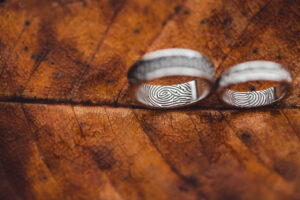What to Consider Before Hiring a Website Designer

Hiring a web designer is not as easy as it sounds. However, it is something that virtually every business owner needs to do at one point or another. Before your business is up and running you need to have an online presence established.
The website for your business is actually considered to be your online store front or virtual presence. You want to have a website that showcases your brand to prospective customers and gives them a pleasant user experience. The wrong layout and design can have a negative impact on your success, which is why it’s so important to make sure you work with the right designer from the start. Here are some tips to help you.
Ask for referrals.
Asking for referrals is great because it will usually give you a lot of real examples to look at, which allows you to really judge the capabilities of the designer. Looking at a portfolio alone doesn’t give you the ability to actually surf the website and experience how it flows.
“It seems like everyone is a website designer these days, and the truth is that many simply aren’t qualified. Having a great looking site alone doesn’t mean it will be a success, and it’s the know-how of the little elements that separate a good design from an average one,” says Darryl Howard of NuWays MD.
Just because a web design company is ranking high on Google doesn’t automatically make them qualified designers to handle your project. A referral from a fellow business owner is always a great starting point.
Know your website goals.
Another important point thing that needs to be kept in mind is to know what the priorities and goals of your website are. Before hiring any web designer you need to ask yourself few questions like whether the site will be selling services or products or will the site simply exist to provide information about the business.
“Once you know your goals, you can always reference competitors, highlighting what you like and don’t like about their look, feel, and functionality. A web designer isn’t going to know what functions you need – that is your job to understand fully, as the business owner,” explains Christopher VanDeCar, CEO of Optimally Organic.
Map it out in details, as the more detailed your design and development requirements, the better the end result will be.
Creating a funnel for conversion goals.
You can’t just throw up a website without any conversion goals and paths mapped out. When someone lands on your website what do you want them to do? Submit a form? Call your business? Come visit your physical location? Make a purchase directly on the site? Read your blog content?
“It’s important to have all of your conversion goals identified ahead of time and create a site that will function in a way to help you achieve all of your conversion goals. If you aren’t converting your traffic then your website is basically useless,” says Jake Braun of ChopperExchange, a website that lists Harley Davidson motorcycles for sale
If you don’t fully understand how funnels work, there are plenty of free resources online that provide training and explanation. Creating well designed funnels are as important as the website design itself.
Make a design wish-list.
Web designers are creative by nature. This is great, but you need to make sure you maintain control and tell them exactly what you want and the easiest way to keep this organized is by maintaining a wish-list that contains all of the features and design trends you like as well as those you don’t.
“Some designers may have particular colors that they like to work with, but they will not work for your business,” explains Luqman Khan of Wireloo, a website that just released a new water dispenser buying guide. “You need to be very specific in order to keep the project on track and tailored to your company’s branding and needs.”
Spend some time looking at competitors and note what you like and don’t like about each. Also, make sure to include specific features that you want along with those you don’t. For example, if you want a newsletter form in the sidebar, note that. If not, the designer might place it where he or she sees fit, and it might not be ideally what you want.




